Is the diversity among raptor beaks so prominent to warrant an entire article? From an eagle’s broad, strong beak to the sickle-shaped, narrow bill of a kite, there is a massive amount of variance between these birds.
But what is a raptor? Webster defines raptors as “a carnivorous medium- to large-sized bird…that has a hooked beak and large sharp talons and that feeds…on meat taken by hunting or on carrion.”
Raptor is a Latin word and the root of raptorial, meaning to grasp. Grasping is the defining feature of these birds, holding their prey with their feet as they tear them apart.
Raptors are some of the most iconic birds from around the world. They have been seen as status symbols, represent a nation’s power, or been the draw that makes a child curious about the world around them.
Today, we are focusing on their beaks and the adaptations they have undergone to fit the lifestyle they hold. In particular, we will be looking at the differences and similarities within the largest order of raptors, Accipitriformes.
Before we get into what makes their beaks so impressive, we should review the basics.
Beaks are made of a bony core and keratin sheath. Keratin gives the beak flexibility and strength while the bone provides support to keep it ridged.
The upper jaw is called the maxilla, and the lower jaw is the mandible. Most bird’s maxilla can move independently from the mandible, and this is called cranial kinesis. Seen to a small extent within raptorial birds, but mostly absent.
Something we will see more in this article is the cere. This is the leathery skin that surrounds the nares at the maxillary beak base in most raptors.
The nostrils of birds are often referred to as nares. The bird’s lifestyle determines its location on the maxilla.
If you want to learn more about the basic structure of beaks and some herbivorous beak types, check out Bird Beaks Part 1: Basics and (Mostly) Herbivorous.
Originally I planned to cover raptor beaks as just a section of the carnivorous beak types. After doing my research and looking through all the photos I have, I thought it would be a disservice to these amazing birds to be just a short section of an article.
And after further working on this article, I’ve decided to split that into two separate ones! This article will be focused specifically on the order Accipitriformes, while Bird Beaks Part 3 will contain Falconiformes, Strigiformes, and Cathartiformes.
For you non-Latin speakers, I am covering hawks, eagles, and kites here and will continue with falcons, owls, and New World vultures in Part 3!
I’ve split the beak types by the bird’s genus, the most specific phylogenetic level before the individual species. This should be better for clarity, see the similarities these birds have to each other and their cousins’ differences.
Common Hawks (Buteo)
I think hawks are the perfect place to start within this group of birds; the name Accipitriformes translates to “Hawk-like Raptor.”
The bill has a smooth, sharpened edge on the maxillary jaw, ending with a pronounced hook. They are perfectly designed for cutting off chunks of flesh and dispatching their prey.
The mandible is narrow and nearly featureless. It is cupped so that the tongue lays flat inside and indexes precisely with the upper jaw.
The cere on these birds is usually yellow, just surrounding the nares of the bird. Ornithologists still aren’t entirely sure what the cere does.
Some speculate it is to protect the nares from debris, while others think it can increase their sense of smell. In some other birds, the cere’s color is used to determine the sex of an individual.
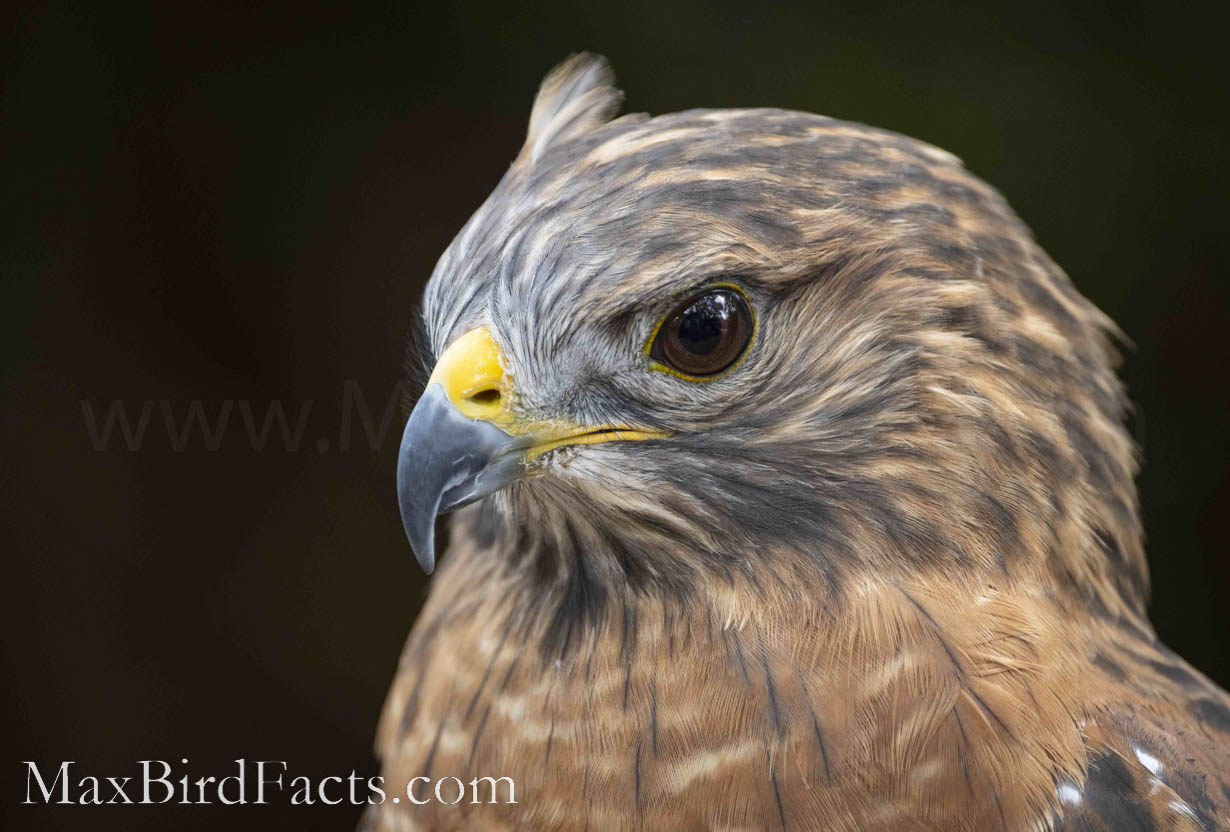
Small hawks will hunt insects, reptiles, amphibians, small mammals, and other birds. Basically, anything they can pin down under their weight.
They don’t have a lot of bite strength, so they cannot face larger prey. The beak’s shape and structure help solve this dilemma.
They can focus the force of the bite or peck with the sharp-pointed maxilla. The sharpened edges allow them to cut their prey’s flesh with less resistance.
They regularly have to keep their beak clean and sharp by rubbing it on branches. Think of your kitchen knife. If you don’t clean it and resharpen it after using it, the blade will rust and dull.
A bird’s beak will continue to grow throughout its lifetime, like your fingernails. This growth stops general wear and tear from becoming a significant problem in the future, stopping small cracks from becoming fractures over time.
The use of the beak is necessary to prevent it from growing too much, so rubbing down the edges and tip is crucial.
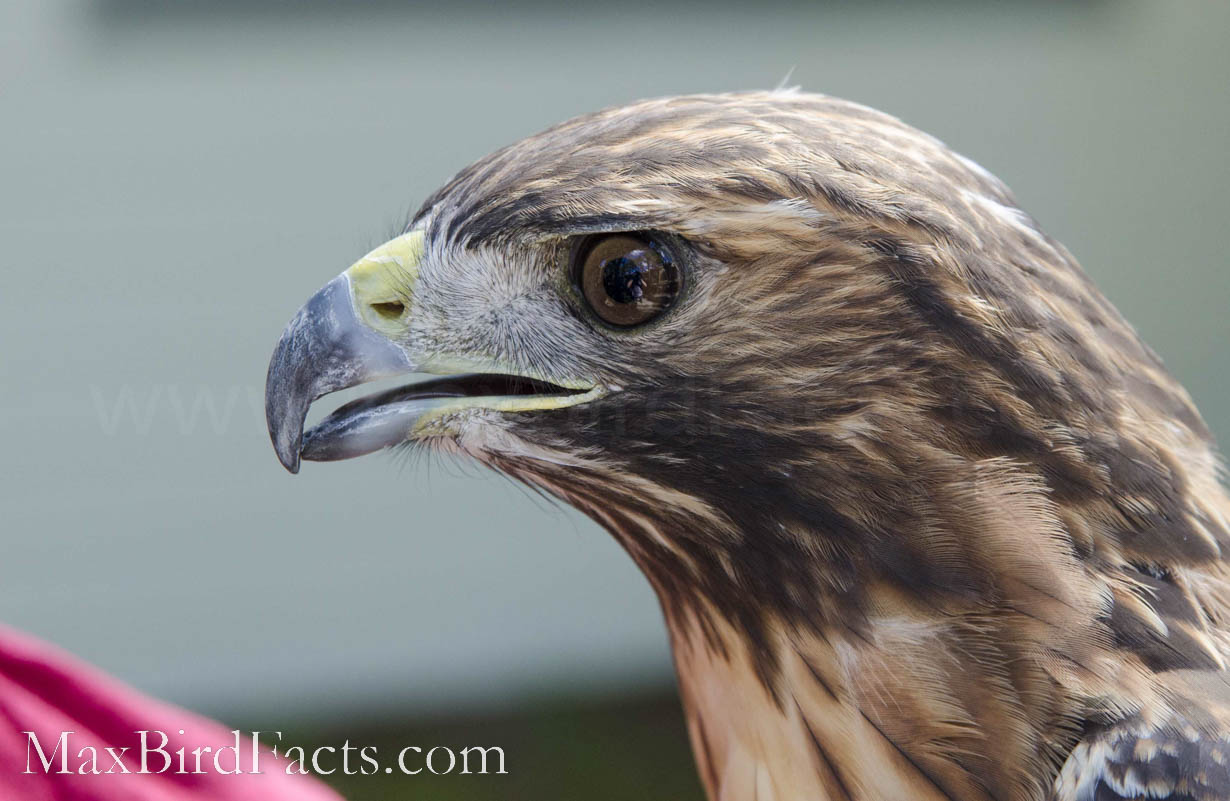
Larger hawks will naturally be able to go after larger prey. Their beaks are practically the same as their smaller relatives, just scaled up.
Strengthening their beaks with the higher amounts of bone they have allows them to feed on larger mammals.
The simple design of the beak will enable them to have a vast range of potential prey. This is why members of the Buteo genus are so widely spread.
They can broaden their diets to fit the available game in the area. And when that changes, it won’t be challenging for them to adapt to the new options.
A common hawk’s bite is only focused at the tip, but their relatives in the next section start to develop a solution for this.
Grasping Hawks (Accipiter)
These hawks are very similar to their more common cousins. There is the start of a very distinct adaptation to fit their preferred prey, other birds.
Grasping hawks are streamlined for aerial combat. They need to be maneuverable to catch their prey, with shorter, broad wings and a long, narrow tail.
But once they’ve caught their dinner, they need to dispatch it quickly, and here is where we will start to see a “tooth” forming on the beak.
Bird-eating raptors will commonly have a feature on their beak called a tomial tooth. This is a raised portion on the maxillary jaw, roughly a third of the way from the beak’s tip.
The overall maxillary structure is compact, deeply curved, with sharpened biting surfaces, and ending in a well-defined hook. However, the tomial tooth is just beginning to appear in these birds.
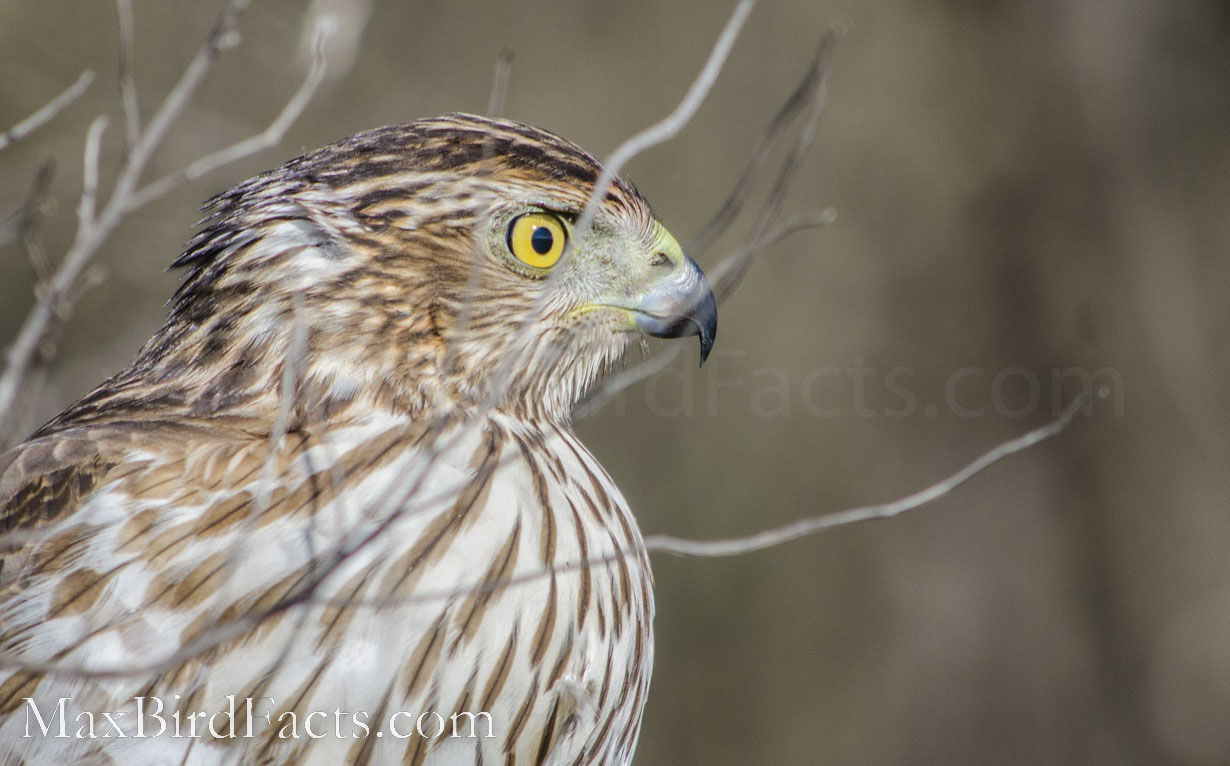
The mandible is a little more complicated than before. There isn’t a grove for this tooth, but more of an indent. The lower jaw is laterally compressed (thinned) where the pseudo tooth rests, allowing the mouth to close completely.
Unfortunately, these birds don’t often use this adaptation. Occasionally they will use the tooth to dispatch their prey. However, they usually crush or drown their game under their talons.
The deep hook they have to their beak is perfect for ripping into their meal. Again, this is a defining feature that is significantly echoed throughout this group of birds.
We will see the tomial tooth return in Bird Beaks Part 3: The Specialization and Perfection of Falcon, Owl, and Vulture Beaks!
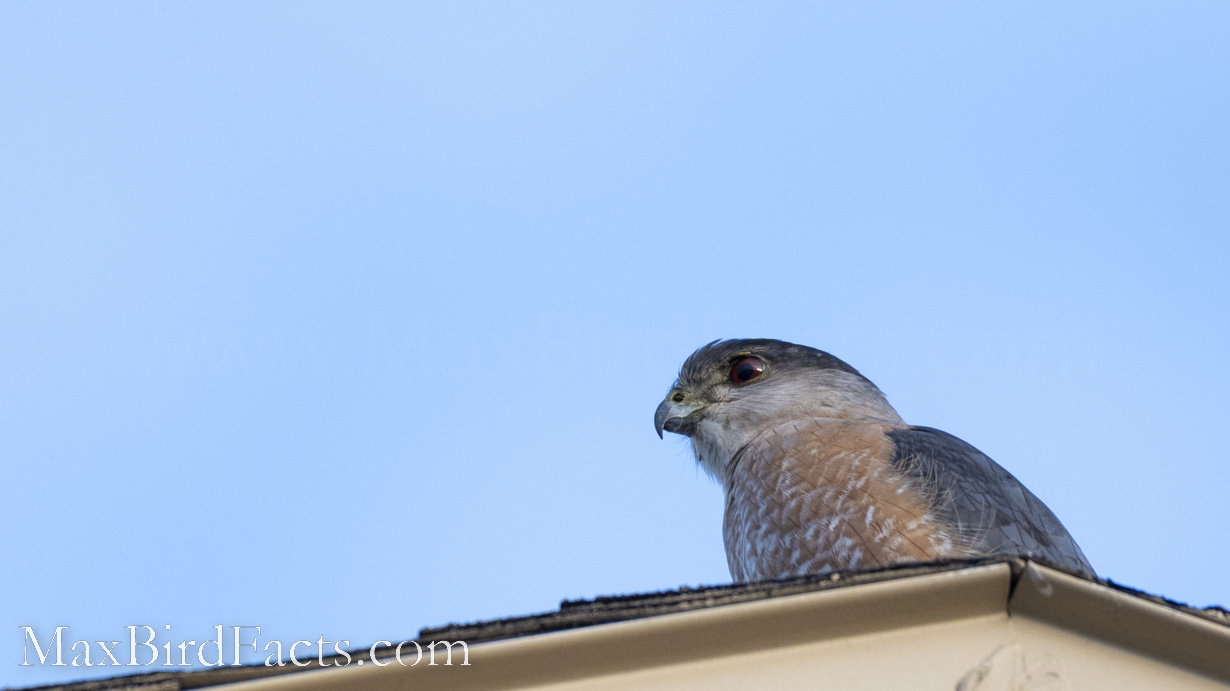
Sea Eagles (Haliaeetus)
The Bald Eagle, a member of the genus Haliaeetus, mainly feeds on fish and carrion. They will sometimes go after terrestrial animals, but their equipment is set up for their preferred prey.

An eagle’s beak is broad, robust, and deeply curved. Just as before, the mandible fits into the maxilla. There is a prominent curve and sharpening on the maxilla as well.
However, there is a noticeable recurved shape to the sharpened edge of the maxilla. Recurved means there is an upward curve just before the beginning of the hook.
The recurved edge increases the sharpened surface area, allowing more efficient cuts. Eagles also use this curved edge to gut the fish they catch, so they can more easily get to the fat-rich roe.
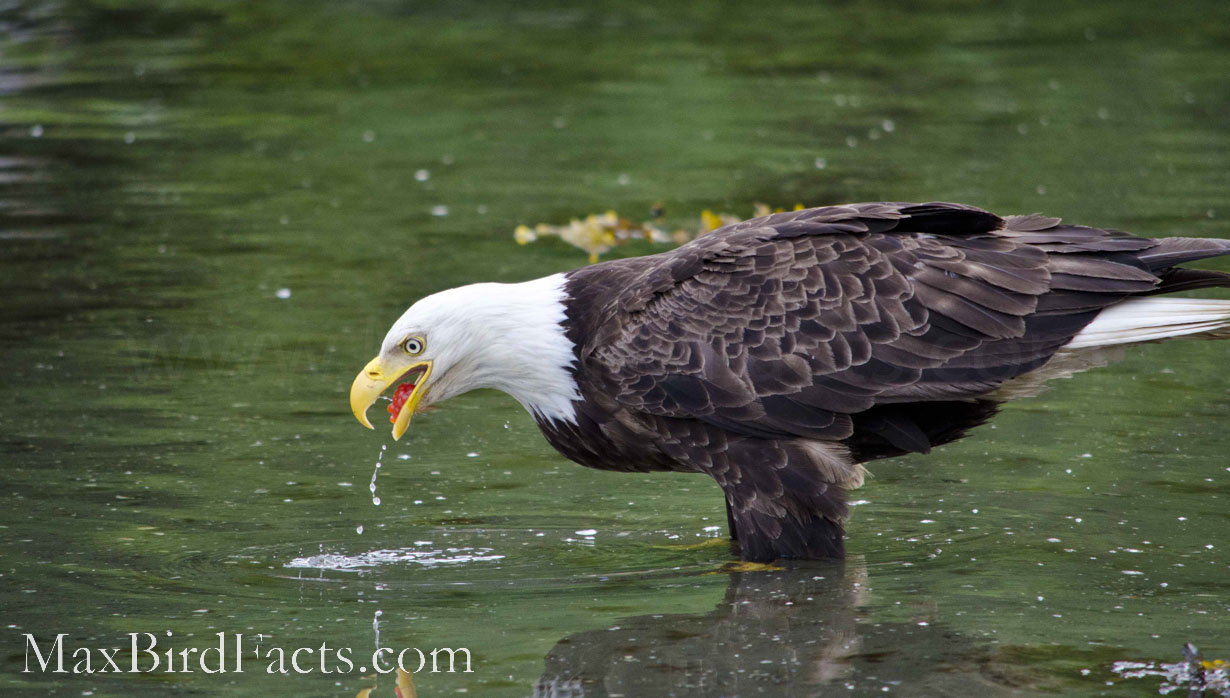
This feature also aids when the eagle is picking at roadkill, the sharp beak gives the bird the strength to cut into thicker hides. Bald Eagles have been seen feeding on anything from alligators to rabbits and even beached whales.
Looking at the distribution of these raptors, you can understand why they would opt for this beak. Bald Eagles currently range across the entire continental United States, all of sub-Arctic Canada, and into the northern states of Mexico.
Their success is dually in part from protection efforts and their flexible diet. If they specified their prey, they would have a much harder time recovering from their near extinction. Which unfortunately leads us to our next remarkable genus.
Hook-beaked Kite (Rostrhamus)
As their name implies, these raptors have the most distinctly hooked beaks of all. This genus only has one species, the Snail Kite, showing how far an animal can adapt for a particular prey.
The maxilla is long and narrow, with no real features of note besides the hook’s intensity. The edges are less sharp compared to other raptors.
Imagine swapping your pliers for scissors. Instead of grabbing the thing you need, you would cut it. That is why the edges of the beak are dull.
There is virtually no straight edge to the maxillary jaw on Snail Kites. The hooked tip begins near the cere, where there is a brief flat area.
The mandible is only slightly narrower than the maxilla in this case. Once the kite closes its mouth, the mandible will sit just barely inside the maxilla.
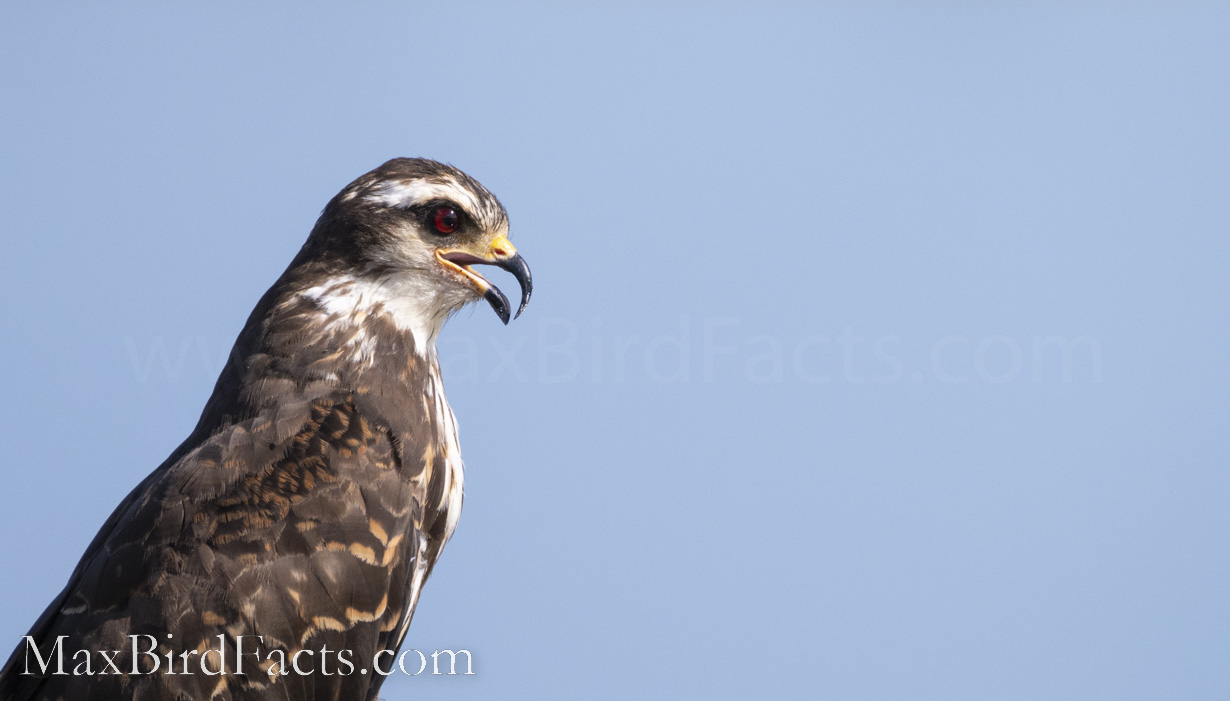
The ridiculous hook is necessary to reach around the snail’s curved shell to get to the meat. There has been an evolutionary arms race between these two species, the kite’s beak needs to curve to fit the shell, and the shell needs to curve to stop the bird from getting at the snail.
The problem with this is when the prey starts becoming harder to find, the predators will starve. We see this with the Florida Apple Snail Kites.
Invasive species of Apple Snails have come in and taken over much of the range of native species, causing them to be outcompeted in these areas and lowering the available prey for the kites.
Thankfully this arms race has been taken up between the Florida Snail Kites and the invasive snails. Researchers have recently conducted studies to show an increased curvature to the maxillary beak caused by more giant invasive snail shells!
If you want to read more about Florida Apple Snails and their relationship with invasive snails, check out the full article I wrote on them, Invasives Helping Endangered: Florida Snail Kites & Apple Snails.
Fork-tailed Kite (Elanoides)
It isn’t hard to see how these birds got their names either; maybe that’s a trend with kites. Swallow-tailed Kites are also the only members of their genus.
These birds soar above open meadows and grassy fields, searching for insects, small reptiles, and amphibians to snatch. They will even stay aloft and will eat their captured prey.
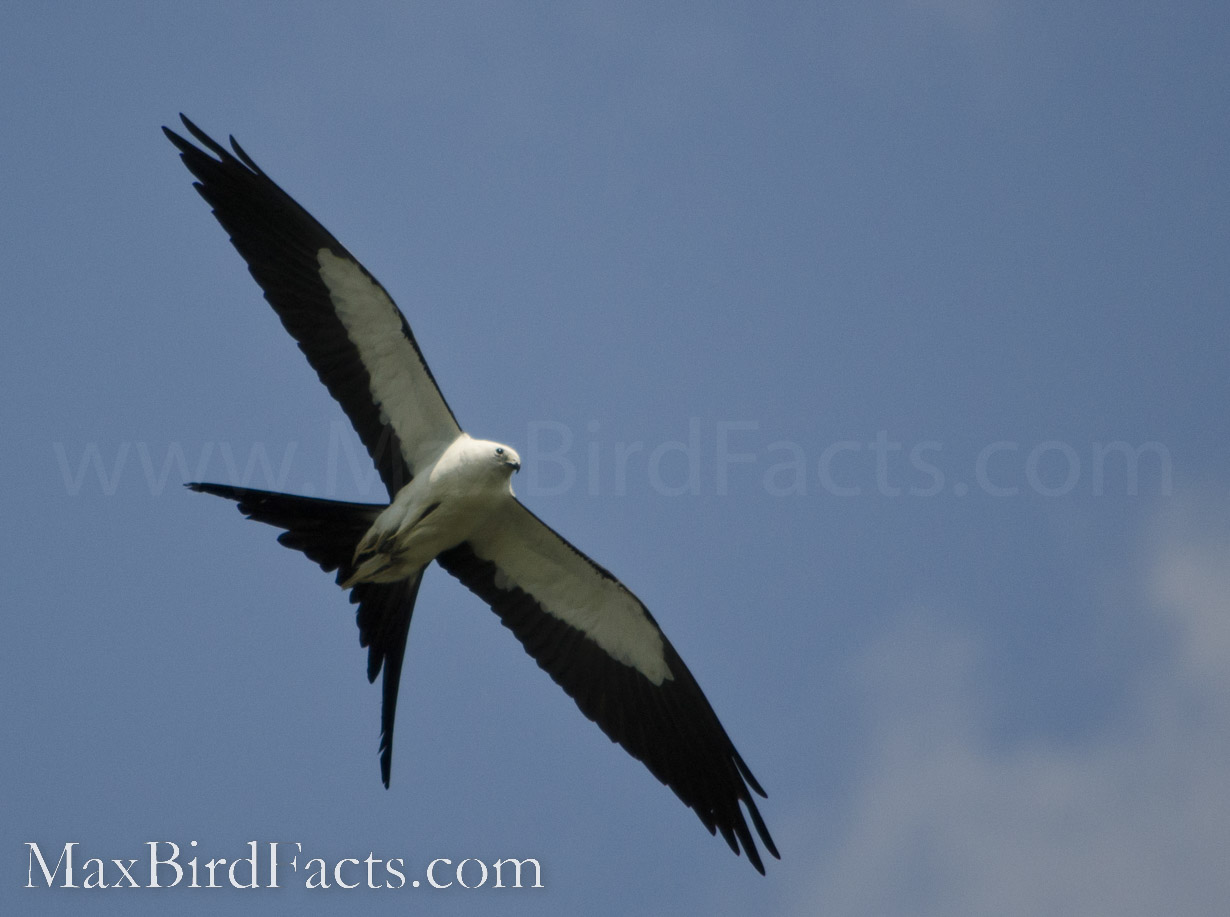
The beak of these kites isn’t as remarkable as their cousin previously mentioned. They do have a reasonably wide mouth, tapering to a narrow tip and curved bill.
The maxilla is very similar to Buteo we talked about earlier. A smooth edge until the keratin sheath starts a shallow curve to the tip and ends with a pronounced hook.
Again, like their hawk relatives, the mandible is compressed, so it fits into the maxilla. The cere on these birds is more pinkish-gray, leaving a very monochromatic look to the birds.
There are feather rachises (central shaft of a feather) projecting from the skin around the mouth. Known as rictal bristles, these act as sensory gathering feathers, similar to a cat’s whiskers.
These modified feathers help the birds catch flying insects. If an insect is close to the kite’s mouth, the turbulence it produces is picked up by the rictal bristles, and the insect is then gobbled up.
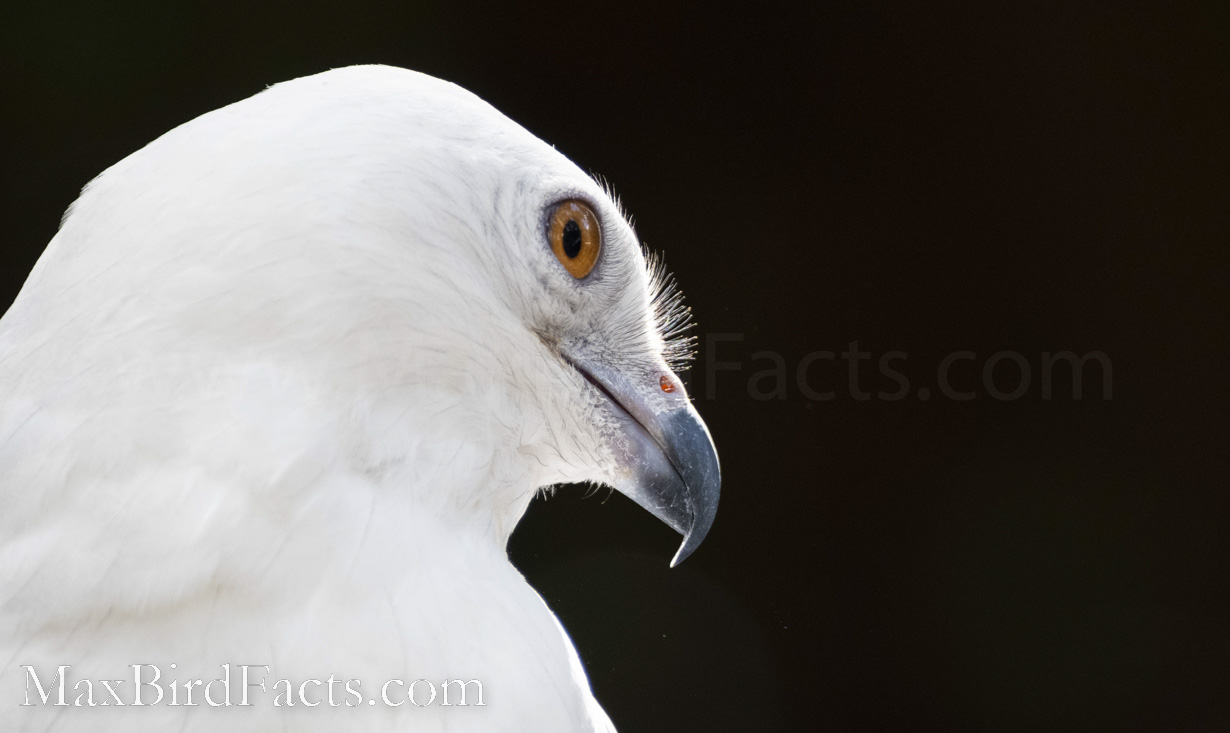
The wide mouth is a common feature with insectivorous birds that hunt in flight. Like a funnel, the wider mouth helps the kite catch more insects easier.
The mouth is also shorter than their Common Hawk cousins. The shorter length makes it faster for them to turn and snap at an insect in flight.
It also doesn’t need to be very large or reinforced for the small prey they typically eat. Because they are always flying, a smaller, lighter bill would be more advantageous to them.
Wrapping Up
So we’ve learned that there are many similarities and differences between the members of this order. Each genus has come up with its own answers to the lifestyles they have taken up.
We also saw there are some fundamental similarities between all of these birds. A hooked end to the beak, typically a sharpened edge to the maxillary keratin, and a mandible fit perfectly into the upper jaw. Modifications are done to these common traits to fit the niche taken by the raptor. Some have opted for more robust, sharpened beaks to rip into thick skin and hide. Others have gone down the path of focusing on just one specific prey source, and the beak becomes amazingly unique because of it.
It is imperative to keep in mind that there is no right or wrong shape for these beaks. That is utterly down to the success they have found through millions of years of evolution through natural selection.
Looking at the relationships these magnificent birds have with each other and comparing their beaks can help us see that. I know I have a completely new appreciation for all the tiny details on just the mouthparts of these birds. I’ve spent dozens of hours studying my photos while writing, and the minute differences can be just as beautiful as the prominent ones!
Thank you so much for reading to the end of this. I hope you walk away learning something new after reading this.
Let me know of any other topics or birds you would like to learn about in the comments below.
Make your day great!
Max
Resources
Aabech, Jørgen S. “Accipiter.” Our Beautiful World, www.vulkaner.no/n/birds/hawk/accipiter.html.
“Audubon’s Crested Caracara: Multi-Species Recovery Plan for South Florida.” South Florida Ecological Services Field Office, U.S. Fish and Wildlife Service, www.fws.gov/verobeach/msrppdfs/audubonscrestedcaracara.pdf.
Campbell, Victoria. “Birdword: An Illustrated Guide to Some Tongue-Twisting Ornithological Terms.” All About Birds, The Cornell Lab, 9 Jan. 2020, www.allaboutbirds.org/news/birdword-an-illustrated-guide-to-some-tongue-twisting-ornithological-terms/.
Mayntz, Melissa. “What Does a Cere Mean for Birds and Bird Identification?” The Spruce, 13 Aug. 2019, www.thespruce.com/definition-of-birds-cere-386867.
McCann, Sean, et al. “Strike Fast, Strike Hard: the Red-Throated Caracara Exploits Absconding Behavior of Social Wasps during Nest Predation.” PloS One, Public Library of Science, 26 Dec. 2013, www.ncbi.nlm.nih.gov/pmc/articles/PMC3873407/.
“Raptor.” Merriam-Webster.com Dictionary, Merriam-Webster, https://www.merriam-webster.com/dictionary/raptor. Accessed 30 Dec. 2020.
Turkey Vultures Have Super-Sniffers, 6 Apr. 2012, animalfactoftheday.blogspot.com/2012/04/turkey-vultures-have-super-sniffers.html.
Discover more from Welcome to MaxBirdFacts.com!!!
Subscribe to get the latest posts sent to your email.

Pingback: Bird Beaks Part 3: The Specialization and Perfection of Falcon, Owl, and Vulture Beaks – Welcome to MaxBirdFacts.com!!!
Hi Max!
This is a fascinating and informative article! Since “Birds of Prey” have always been my favorites, it’s astonishing to learn about their different beaks and the specific uses for each individual species! This info will stay with me, and I will look at each species with a greater and more informative appreciation for these magnificent birds! This was educational and awesome to read! Well done my friend!! Thank you for for tireless work!🥰👌💜
Keep an eye out for the next beak article, because it has your favorite bird in it Debbie! I’m so happy you found some gripping knowledge out of this article!